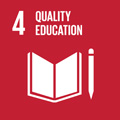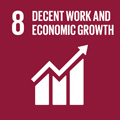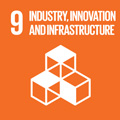- Docente: Simone Aliprandi
- Credits: 6
- SSD: IUS/01
- Language: Italian
- Teaching Mode: Blended Learning
- Campus: Ravenna
- Corso: Second cycle degree programme (LM) in Library and Archive Science (cod. 9077)
-
from Mar 17, 2025 to May 06, 2025
Learning outcomes
The course aims to stimulate reflection on the impacts that the digital revolution and the advent of the internet have had on the legal world and to provide a smattering of general principles on private information law and intellectual property. The lessons will be completed by concrete examples taken from contractual practices, commented reading of documents and presentation of case studies applied to the world of production and management of creative content. At the end of the course, students become familiar with the various regulatory sources, learning to orient themselves in the search for the rules applicable to various cases, and are able to draw inspiration at an operational level from the case law that governs this sector. Students are also able to recognize the most common types of contracts and licenses and to apply them to their business, as well as to use the main communication and content sharing platforms in compliance with current regulations.
Course contents
1) Introduction, scenario and normative sources. The world of law challenged by the digital and telematic revolution.
2) Elements of contract law with a focus on contracts via the Internet
3) The protection of privacy and European rules on the processing of personal data
4) The management of privacy on the web and social media
5) Introduction to intellectual property law. Protected works, rights holders and acquisition of rights
6) Classification of intellectual property rights (moral rights, patrimonial rights and rights), with a focus on those relevant in the publishing sector
7) The protection of photographs and images in general
8) Public domain, fair use and cases of free use of creative works
9) Creative Commons licenses and the open access paradigm
10) The problem of reproductions of cultural heritage in Italy and the so-called freedom of panorama
11) Legal issues related to digital lending and digital libraries
12) Copyright issues related to works created with artificial intelligence systems
Readings/Bibliography
Giovanni Pascuzzi, Il diritto dell'era digitale (quinta edizione), Il Mulino, 2020.
Simone Aliprandi, L'autore artificiale. Creatività e proprietà intellettuale nell'era dell'AI, Ledizioni, 2023.
Simone Aliprandi, Come gestire i diritti d’autore per fare Open Access. La libera diffusione del sapere scientifico nell’era digitale, chapter 4 of the book Simone Aliprandi (editor), Fare Open Access, Ledizioni, 2017 -> available at https://aliprandi.org/books/fare-openaccess/ .
Simone Aliprandi, Creative Commons: manuale operativo, Ledizioni, 2013 -> available at https://aliprandi.org/books/manuale-cc/ .
Simone Aliprandi and Carlo Piana, Tutela dei beni culturali e lo strano caso di Studi d'arte Cave Michelangelo, in Dirittodautore.it, feb. 2023 -> available at https://zenodo.org/records/7655286 .
Teaching methods
The course is taught in an innovative hybrid mode. A third of the lessons (4 lessons out of 12 in total) will be delivered remotely using the university platform; and in any case all the lessons will be recorded and then reorganized into a complete audiovisual teaching path, usable independently by the students.
The materials provided to attending students will also all be in digital format, starting from the slides shown in class and the documents mentioned in them.
For attending students, the digital materials shown in class and the audio-video recordings of the lessons will become the main reference for preparing for the exam.
The teacher's approach is however quite classic: in the lessons the legal principles will be illustrated starting from the current regulations and the jurisprudential orientations, trying however to put everything into reality with concrete examples and use cases mainly connected to the world of both traditional and multimedia publishing.
Various moments of the course will imply direct involvement of the students, divided into groups, based on the reading and commentary of documents useful for understanding the topics covered, such as case law, contract models, terms of use of platforms and websites, scientific articles.
Assessment methods
EXAM FOR ATTENDING STUDENTS
Attending students will be able to take a written exam in the form of a multiple-choice test that will be held only on the occasion of the first exam session (May session). Those who do not show up for the first exam session will still be able to bring the program as an attending student, but in oral form (classic individual oral exam with 2-3 questions).
Those who have attended at least 75% of the lessons (i.e. 9 lessons out of a total of 12) and who have taken part profitably in the exercises proposed during the course will be considered attending students. There may be some margin of flexibility on this aspect, but only for particular needs (work, family...) and in any case by prior agreement with the teacher, who may decide to compensate for any absences with supplementary materials to be prepared.
For students considered attending students, the topics will be all those covered in class and in the laboratory activities. The reference materials will be the teacher's slides, notes taken in class, articles/documents indicated in class, audio-video r
ecordings of the lessons, any agreed supplementary readings.
- - - -
EXAM FOR NON-ATTENDING STUDENTS
Non-attending students will prepare for the exam by studying two books and will be questioned on those in a classic oral exam. For those who have never attended even one lesson and have not made arrangements with the teacher, the program to bring "by default" is the non-attending one valid for all sessions. Below are the details on the two publications to study.
1. Giovanni Pascuzzi, Il diritto nell'era digitale (fifth edition), Il Mulino, 2020. → Limited to the following chapters
Premessa. - Introduzione.
- Parte prima. Le tecnologie dell'era digitale.
I. Hardware, software, algoritmi.
II. Reti e Internet.
- Parte seconda. Come le tecnologie digitali cambiano le regole giuridiche.
III. Dal diritto alla riservatezza al diritto alla protezione dei dati personali.
IV. L'evoluzione dei concetti di «documento» e di «sottoscrizione».
X. Il diritto d'autore dell'era digitale.
- Parte terza. Approfondimenti.
XII. «Internet of Things».
XIII. «Cloud computing» ed «edge computing».
XIV. «Big data».
XV. «Blockchain» e «smart contract».
XVI. Intelligenza artificiale e robotica.
XVII. «Internet Service Provider».
XVIII. Social network.
XIX. Democrazia elettronica.
XX. Amministrazione digitale.
- Parte quarta. Il diritto dell'era digitale.
XXI. Deterritorializzazione
XXII. Destatualizzazione.
XXIII. Dematerializzazione.
XXV. Cibersicurezza.
2. Simone Aliprandi, L'autore artificiale. Creatività e proprietà intellettuale nell'era dell'AI, Ledizioni, 2023. → ENTIRE BOOK
Teaching tools
"Microsoft Teams" for online lessons
"Virtuale" for digital materials (including audio-video recordings of lessons)
Office hours
See the website of Simone Aliprandi
SDGs



This teaching activity contributes to the achievement of the Sustainable Development Goals of the UN 2030 Agenda.
